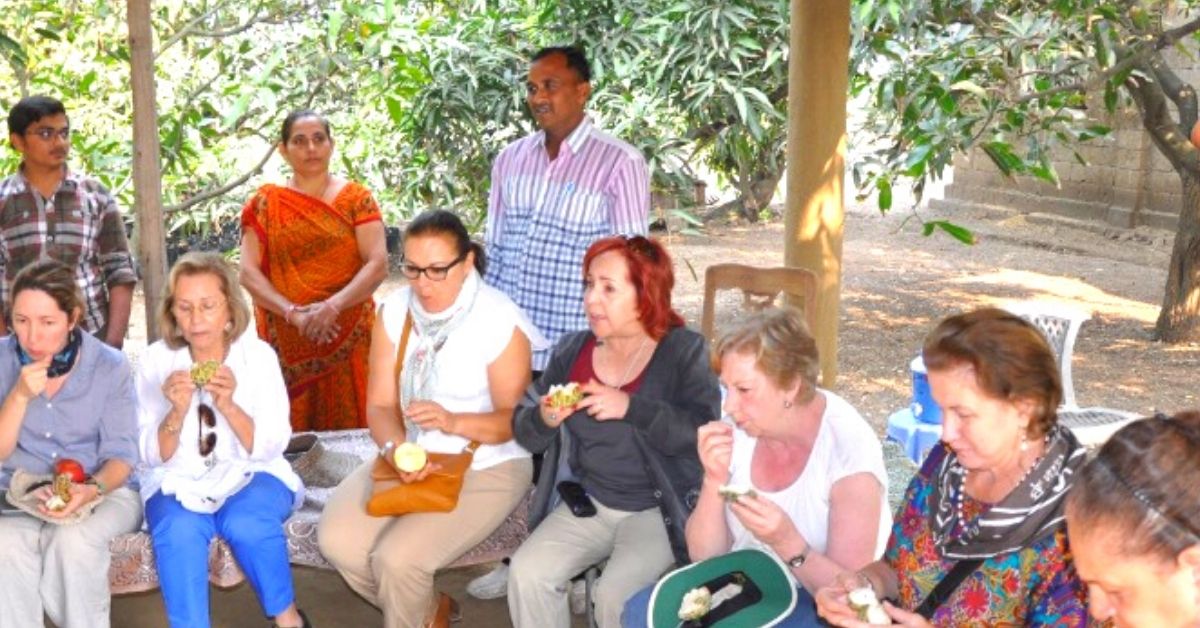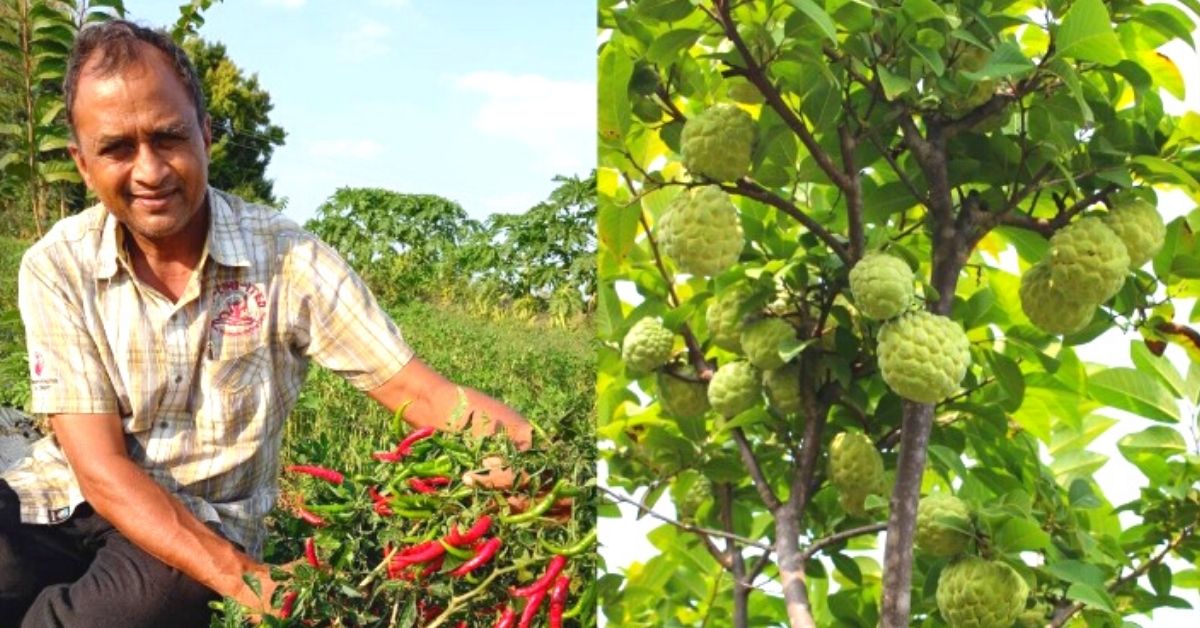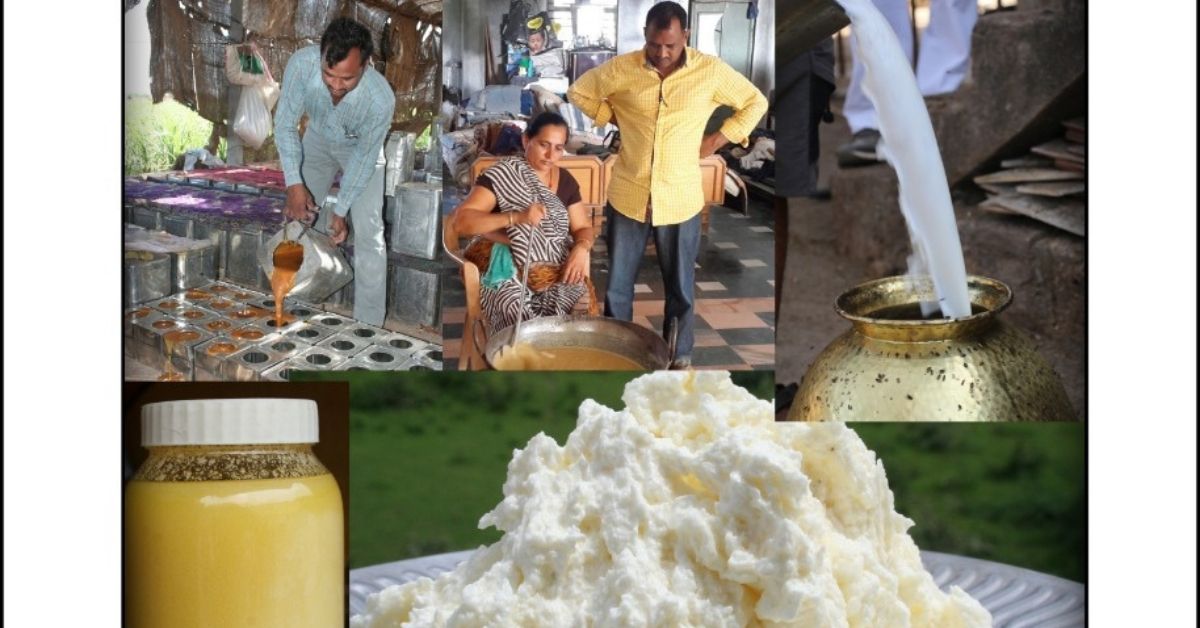Farmer’s Unique Marketing Idea Attracts People from 32 Countries, Helps Him Earn in Crores
By switching to organic farming, Purushottam Sidhpara from Junagadh, Gujarat, cut down his input costs by 40% and water usage by 20% while earning export orders from 10 countries.

Purushottam Sidhpara is one of the many farmers in India to practice organic farming or farming without the use of pesticides and chemicals. Besides the quality and the organic component of his produce, what sets this 50-year-old’s farming apart is his marketing strategy.
Based in Jamka village in Gujarat’s Saurashtra region, he inherited the farms from his father at the age of 18 and grew the business exponentially over the years. From grains, pulses, spices, vegetables to fruits, Sidhpara sells almost everything in India and 10 other countries.
When it comes to his marketing strategy, most people do not believe his claims of never spending a penny on online marketing. What he employs is his warm hospitality.
“Atithi Devo Bhava is a sentiment that I take seriously. I invite my potential dealers or customers to my farm, where they can stay with me for a couple of days. I show them my farming process in detail, provide meals made from my farm crops and answer all their queries without charging a single penny. If they like the food they eat, we exchange numbers to place orders. I also give them regular updates on Whatsapp about harvesting the crop. This helps gain their trust and loyalty,” Sidhpara tells The Better India.
The story behind how Sidhpara got this unique selling idea involves a local drought-defying initiative that grabbed the nation’s attention 20 years ago.

Till 1999, drought was a major challenge and the reason behind crop losses in the Jamka village of Junagadh. That year, the villagers came together and raised funds to build small dams and reservoirs to store the rainwater.
“We raised Rs 45,00,000 and built 55 small dams and five ponds for a population of 3,000 villagers. When it rained, the new reservoirs saved lakhs of litres of water and the groundwater tables rose from 500 feet to 50 feet. Since then, insufficient rainfall has never been a problem. The Gujarat government adopted our model to implement it in other water-scarce regions. Experts, students, water activists and media members flocked our village for almost an entire year to study the results,” recalls Sidhpara.

The villagers, including Sidhpara, welcomed the outsiders as their own family members and invited them to their homes and farms.
“After eating my food, people wanted to purchase the crops, vegetables and spices directly from us. For the first time, we were dealing with the customers directly, as until then our business model was B2B [business to business]. The visitors went back and told their friends and family about my farm, and my business grew through word of mouth. This was my biggest learning so I continued hosting visitors,” he says.

Sidhpara’s present annual turnover stands at Rs 2 crore and he has customers across various countries, including the USA, UK, Norway, Germany, Dubai and Ethiopia.
Sidhpara notes that the mantra of inviting customers works only if the farming process and techniques adopted are meticulous, sincere and error-free. He shares how a shift from chemical farming to organic raised his profits significantly, along with water-saving methods and tips to ensure nutrient-rich crops.
Cost-effective & Water-saving farming
Being a family occupation, Sidhpara was destined and passionate to enter the agricultural field. As an 18-year-old he had several ideas and most of them stemmed from his education. He learnt about an organic method of farming.
“My father was using both chemicals and cow dung to grow the crops but I wanted to get rid of the chemicals. Other farmers mocked me when I told them. Fortunately, our 15-acre land was used for cow dung so there were no crop losses on eliminating chemicals,” says Sidpara.
Before making the switch, his profits were negligible and the earnings had to be reinvested in purchasing chemicals and pesticides for the next crop cycle. The family’s income was similar to a farm labourer’s, he claims.
Sidhpara replicated the forest model in which plants can grow with minimal intervention. He first planted fruit-bearing trees like custard apple, mango, coconut and papaya. In between these trees, he planted crops such as jowar, bajra, maize and spices like coriander, chilli, jeera and more. The purpose behind this is that they aid in each other’s growth by providing shade, sharing the sunlight and requiring less water due to proximity.

The quantity of harvest per cycle from this unique style of farming is quite difficult to keep a track of.
However, the main aspect of this style of farming is the independent growth of plants and enrichment of the soil.
“There are 15-18 essential nutrients to achieve optimum soil management. Chemicals tend to kill some of those along with insects. Forests thrive independently by taking nutrients from biomass. Cow dung has crores of beneficial microorganisms that decompose the dried biomass on the soil and convert it into ready-to-use nutrients for plants. The dung also has nutrients like carbon, phosphorus, potassium, calcium, magnesium, etc,” he adds.
He developed an anaerobic formula to make organic fertiliser, where he deposits cow dung, jaggery, buttermilk and rice water in a digester to make a liquid-based spray. This mixture is directly sprayed onto the roots along with water.
Additionally, the natural mulching process is also beneficial. Instead of burning the dry leaves and wheat husk, he uses it to cover the ground. This helps in retaining moisture and keeping the land cool.
“My input costs reduced by almost 40% once I switched to organic fertiliser. Meanwhile, the mulching system cut down my water usage by almost 20%. The micro-irrigation system also helps in saving water,” he adds.
These simple measures increased Sidhpara’s income by almost five times and the profits were reinvested in making value-added products like pickle, chutney, chyawanprash, ghee (from milk’s cow), groundnut and sesame oil, wheat flour, dals, etc. This, he claims, raised his profits by 15%.
Bhavani Modi, who has been purchasing value-added products from Sidhpara for the last 12 years says, “Purushottam bhai’s products are trustworthy in terms of quality and quantity. They are always fresh, healthy and taste different from the ones we get in the market.”

Unlike the online portals where customers can place orders directly with no waiting period, Sidhpara’s harvest and value-added products have to be ordered in advance, around each crop’s harvesting cycle.
You can get in touch with Sidhpara at 94272 28975
Edited by Yoshita Rao
If you found our stories insightful, informative, or even just enjoyable, we invite you to consider making a voluntary payment to support the work we do at The Better India. Your contribution helps us continue producing quality content that educates, inspires, and drives positive change.
Choose one of the payment options below for your contribution-
By paying for the stories you value, you directly contribute to sustaining our efforts focused on making a difference in the world. Together, let’s ensure that impactful stories continue to be told and shared, enriching lives and communities alike.
Thank you for your support. Here are some frequently asked questions you might find helpful to know why you are contributing?


This story made me
-
97
-
121
-
89
-
167











